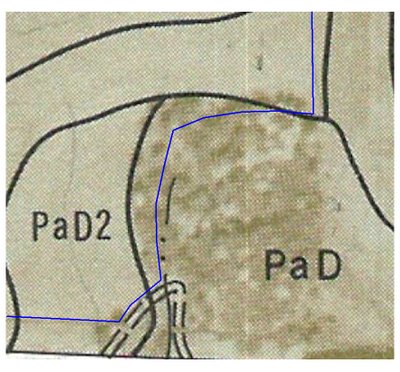Yesterday I finished the perimeter fence in the SW corner. It was a beautiful day to be outside. As I laid out this fence, I tried to understand the different parts of this corner, which has a complex topography. In addition to the main draw shown on the map below, there are two other draws that converge at the bend in the lane. The area south of the draw has mixed hardwoods with ash, maple, and white oak trees. Many are of moderate size; they may have been just a little too small to cut when the woods was logged but have grown vigorously since. They are big enough now to provide deep shade and a thick leaf litter. The soil here seems fragile due to the steep grades and the draws which make for many places were water flows can concentrate. But the leaf litter and fallen wood seem to be absorbing and slowing the rains so that there is little erosion so long an nothing disturbs the area. The narrow zone north of the draw and along the east boundary of the woods on the top side is very different. It's less steep, and is dominated by several very large white oaks which escaped the logging, perhaps because they were too branched or hollow. The oaks are widely spaced and in the intervening areas there is a lot of prickly ash and small elms which have not reached the stage where they succumb to Dutch elm disease, along with the trunks of many dead elms that have. There is less leaf litter here, and there is some erosion under and downhill from the prickly ash.
I envisioned that this area could could become like the original oak openings if the cattle ate the prickly ash allowing grass to grow under the mature oaks. The grass would also hold the soil. In return, the cattle would have shade. It would be good to find and protect any small oaks that might have managed to get started in spite of the prickly ash. As the prickly ash is cleared out, this would be a place to plant bluegrass and more white oaks.
The fence, a single wire strung mostly from one dead elm to the next, is 3-4 rods in from the original fence. The prime morel areas with the larger dead elms are protected. I believe the original fence was intended to keep the cows in the woods when the they had the run of the woods years ago.


No comments:
Post a Comment